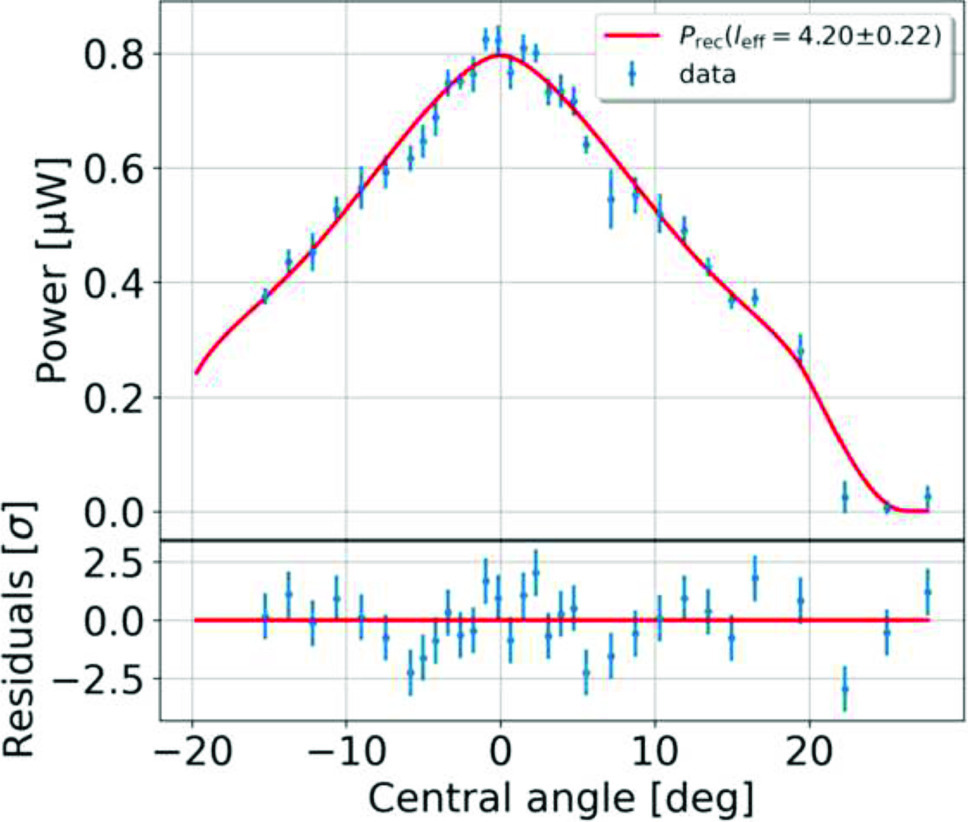https://doi.org/10.1140/epjd/s10053-025-00987-y
Regular Article - Atomic and Molecular Collisions
Calorimetric wire detector for measurement of atomic hydrogen beams
1
Institute for Physics, Johannes Gutenberg University Mainz, 55128, Mainz, Germany
2
Department of Physics, Pennsylvania State University, 16802, University Park, PA, USA
3
Applied Research Laboratory, Pennsylvania State University, 16802, University Park, PA, USA
4
Center for Exploration of Energy and Matter and Department of Physics, Indiana University, 47405, Bloomington, IN, USA
5
Center for Experimental Nuclear Physics and Astrophysics and Department of Physics, University of Washington, 98195, Seattle, WA, USA
6
Laboratory for Nuclear Science, Massachusetts Institute of Technology, 02139, Cambridge, MA, USA
7
Pacific Northwest National Laboratory, 99354, Richland, WA, USA
8
Department of Physics, University of Illinois Urbana-Champaign, 61801, Urbana, IL, USA
9
Wright Laboratory and Department of Physics, Yale University, 06520, New Haven, CT, USA
10
Department of Physics, University of Texas at Arlington, 76019, Arlington, TX, USA
11
Department of Physics and Astronomy, University of Pittsburgh, 15260, Pittsburgh, PA, USA
12
Lawrence Livermore National Laboratory, 94550, Livermore, CA, USA
13
Department of Physics, Case Western Reserve University, 44106, Cleveland, OH, USA
14
Institute for Theoretical Astrophysics, Heidelberg University, 69120, Heidelberg, Germany
15
Department of Physics and Astronomy, Ghent University, 9000, Gent, Belgium
16
Institute for Astroparticle Physics, Karlsruhe Institute of Technology, 76021, Karlsruhe, Germany
Received:
31
January
2025
Accepted:
18
March
2025
Published online:
26
May
2025
A calorimetric detector for minimally disruptive measurements of atomic hydrogen beams is described. The calorimeter measures heat released by the recombination of hydrogen atoms into molecules on a thin wire. As a demonstration, the angular distribution of a beam with a peak intensity of  is measured by translating the wire across the beam. The data agree well with an analytic model of the beam from the thermal hydrogen atom source. Using the beam shape model, the relative intensity of the beam can be determined to 5% precision or better at any angle.
is measured by translating the wire across the beam. The data agree well with an analytic model of the beam from the thermal hydrogen atom source. Using the beam shape model, the relative intensity of the beam can be determined to 5% precision or better at any angle.
© The Author(s) 2025
 Open Access This article is licensed under a Creative Commons Attribution 4.0 International License, which permits use, sharing, adaptation, distribution and reproduction in any medium or format, as long as you give appropriate credit to the original author(s) and the source, provide a link to the Creative Commons licence, and indicate if changes were made. The images or other third party material in this article are included in the article’s Creative Commons licence, unless indicated otherwise in a credit line to the material. If material is not included in the article’s Creative Commons licence and your intended use is not permitted by statutory regulation or exceeds the permitted use, you will need to obtain permission directly from the copyright holder. To view a copy of this licence, visit http://creativecommons.org/licenses/by/4.0/.
Open Access This article is licensed under a Creative Commons Attribution 4.0 International License, which permits use, sharing, adaptation, distribution and reproduction in any medium or format, as long as you give appropriate credit to the original author(s) and the source, provide a link to the Creative Commons licence, and indicate if changes were made. The images or other third party material in this article are included in the article’s Creative Commons licence, unless indicated otherwise in a credit line to the material. If material is not included in the article’s Creative Commons licence and your intended use is not permitted by statutory regulation or exceeds the permitted use, you will need to obtain permission directly from the copyright holder. To view a copy of this licence, visit http://creativecommons.org/licenses/by/4.0/.





